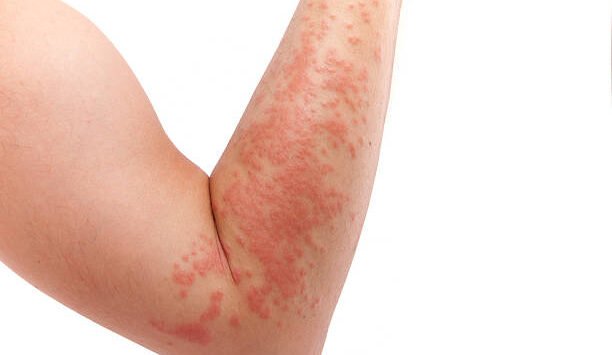Amoxicillin Rash: Is It Really An Allergic Reaction?

Amoxicillin, one of the most prescribed antibiotics globally, is commonly used to treat a wide range of bacterial infections. It’s considered a highly effective medication with a relatively low risk of side effects, but some people experience a skin rash when taking it.
Understanding Amoxicillin and Its Uses
Amoxicillin tablet belongs to the penicillin family of antibiotics and is often used to treat infections such as strep throat, ear infections, sinusitis, and pneumonia. By inhibiting the growth of bacteria, amoxicillin helps the body’s immune system to eliminate infections more effectively. While it’s generally safe for most people, some individuals experience side effects, the most notable of which is a rash.
What Types of Rashes Can Amoxicillin Cause?
There are two primary types of rashes that can occur with amoxicillin use:
- Amoxicillin-induced non-allergic rash (maculopapular rash):
- This type of rash typically appears between 3 and 10 days after starting the medication. It presents as flat or raised red spots on the skin and is generally non-itchy. The rash is often widespread, covering large areas of the body, and can last for several days. Importantly, this rash is not a sign of a true allergy.
- A non-allergic rash is more common in certain individuals, especially those with viral infections like Epstein-Barr virus (mononucleosis) or cytomegalovirus (CMV), and it does not necessarily mean that the person will have to avoid amoxicillin in the future.
- Allergic reaction (hives or urticarial rash):
- In contrast, a true allergic reaction to amoxicillin results in hives (urticaria), which are raised, red, and extremely itchy welts on the skin. This rash can appear very quickly after taking the antibiotic, often within hours to a few days.
- An allergic rash is often accompanied by other symptoms, such as swelling of the face or lips, difficulty breathing, or anaphylaxis, a severe life-threatening allergic reaction that requires immediate medical attention. Buy Cipmox 500 mg online at Medzsupplier.
Understanding these differences is crucial because while one type of rash can be managed without discontinuing the medication, the other might require immediate medical intervention.
Why Do Some People Get a Rash from Amoxicillin?
Not all rashes associated with amoxicillin are allergic in nature, and the distinction is vital for future treatments. Here are a few reasons why someone might develop a rash when taking amoxicillin:
- Viral Infections:
- Many people mistakenly believe that a rash from amoxicillin means they are allergic, but in some cases, the rash is related to an underlying viral infection. For example, patients with mononucleosis (caused by the Epstein-Barr virus) are more likely to develop a non-allergic amoxicillin rash.
- Studies show that up to 90% of people with mono will develop a rash if given amoxicillin. This type of reaction doesn’t indicate a drug allergy, but rather an interaction between the virus and the medication.
- Immune Response:
- The body’s immune system can react to medications in unexpected ways. In some cases, a person may develop a rash due to an overreaction of the immune system to amoxicillin, even if they’re not truly allergic.
- This immune response can sometimes be confused with a drug allergy, especially when it occurs without other allergic symptoms.
- Genetic Predisposition:
- Some individuals are genetically more likely to develop drug-related rashes, including those from amoxicillin. People with a family history of drug allergies or other immune-related conditions might be at higher risk of experiencing a rash from antibiotics.
How to Identify a True Amoxicillin Allergy
Identifying whether a rash is due to an allergy or another cause is critical because a true penicillin allergy can limit treatment options in the future. Here are key signs of an allergic reaction:
- Hives: Raised, red welts that are itchy and often appear in clusters.
- Swelling: Swelling around the face, mouth, or throat, which can indicate a more severe reaction.
- Respiratory Symptoms: Difficulty breathing, wheezing, or tightness in the chest.
- Anaphylaxis: A rare but severe allergic reaction that requires immediate emergency care. Symptoms include rapid pulse, difficulty breathing, fainting, and swelling of the throat.
If any of these symptoms occur, it is essential to discontinue the medication and seek medical attention right away. A true allergic reaction to amoxicillin means that other antibiotics in the penicillin family (such as penicillin or ampicillin) should also be avoided.
Managing Amoxicillin Rashes: What to Do
When a rash occurs while taking amoxicillin, it’s important to determine whether it’s an allergic reaction or a non-allergic rash. Here’s what you can do:
- Contact Your Healthcare Provider:
- If you or your child develops a rash while taking amoxicillin, contact your healthcare provider. They can assess the rash and determine whether it’s a cause for concern.
- In the case of a non-allergic rash, your provider might advise you to continue taking the antibiotic, as it may not pose a significant health risk.
- Antihistamines for Hives:
- If the rash appears to be allergic (such as hives), an over-the-counter antihistamine, like diphenhydramine (Benadryl) or cetirizine (Zyrtec), can help alleviate the itching and discomfort.
- However, if swelling or breathing difficulties accompany the rash, seek emergency medical care immediately, as this could indicate anaphylaxis.
- Allergy Testing:
- If there’s any doubt about whether the rash was due to an allergic reaction, allergy testing might be recommended. Skin tests or blood tests can help determine if you have a true penicillin allergy.
- Some people who believe they are allergic to penicillin may find through testing that they can safely take the medication again in the future.
The Importance of Proper Diagnosis
Misinterpreting a non-allergic rash as a true allergy can have long-term consequences. People who are incorrectly labeled as allergic to penicillin are often prescribed broad-spectrum antibiotics that may be less effective or come with more side effects.
A thorough evaluation by a healthcare provider can help ensure that patients receive the best possible treatment while avoiding unnecessary restrictions on antibiotic use.
Conclusion: Is an Amoxicillin Rash an Allergy?
In summary, not all rashes from amoxicillin are allergic in nature. While a non-allergic maculopapular rash can be uncomfortable, it doesn’t require the discontinuation of the antibiotic. In contrast, an allergic rash, especially one associated with hives or respiratory symptoms, requires prompt medical attention.
If you or a loved one develops a rash while taking amoxicillin, it’s essential to consult a healthcare professional to determine the appropriate course of action. Proper diagnosis is key to ensuring safe and effective treatment for bacterial infections while avoiding the unnecessary avoidance of a highly effective antibiotic.




